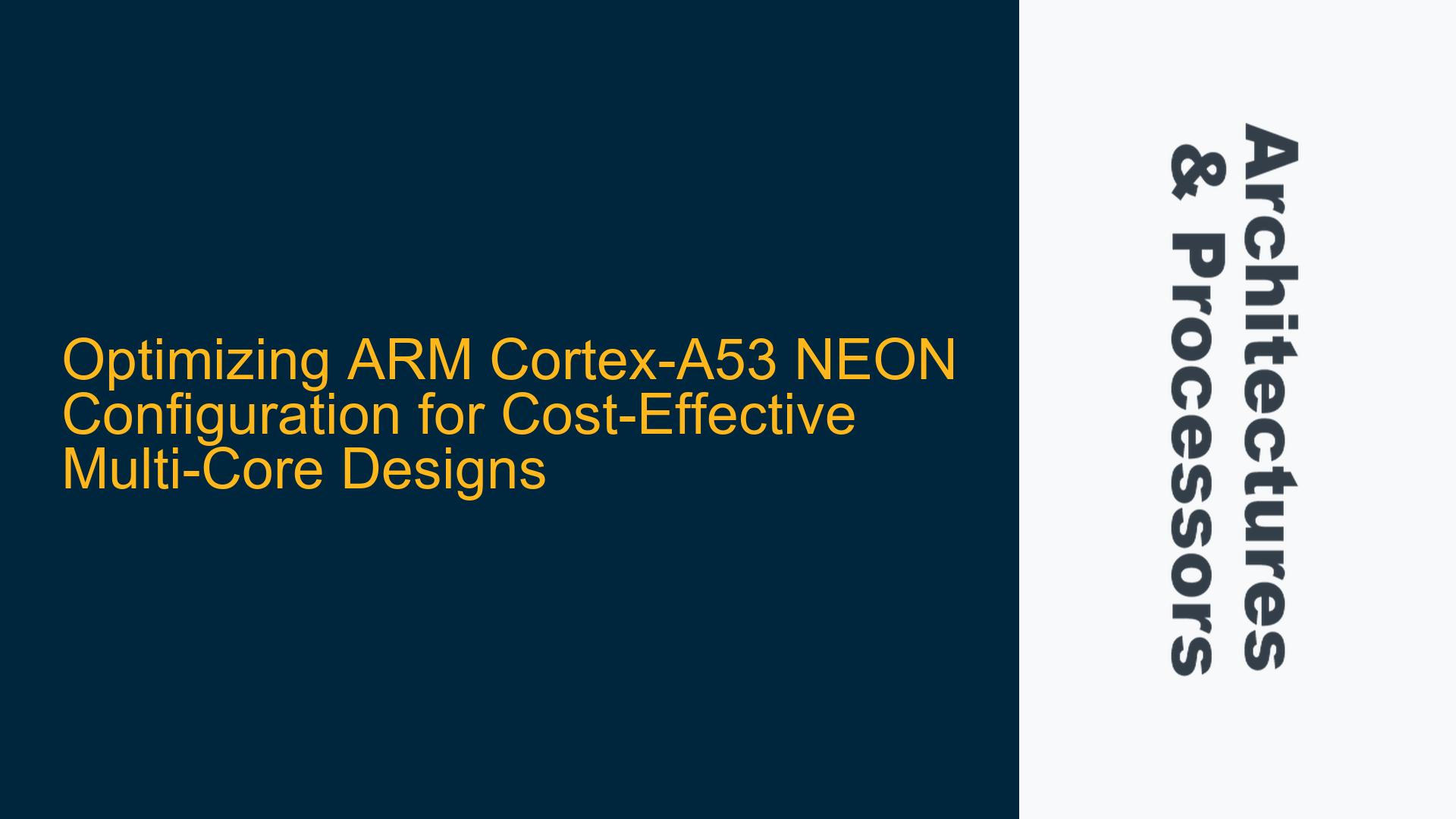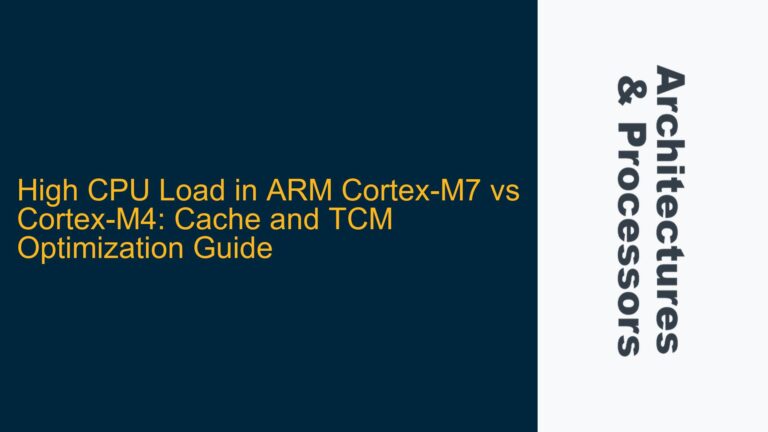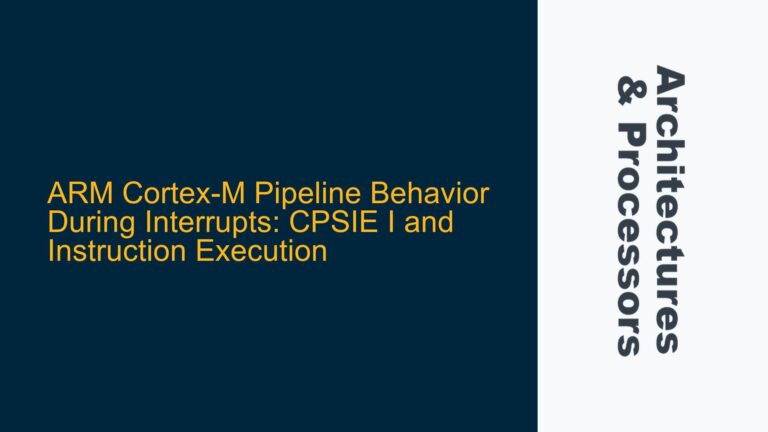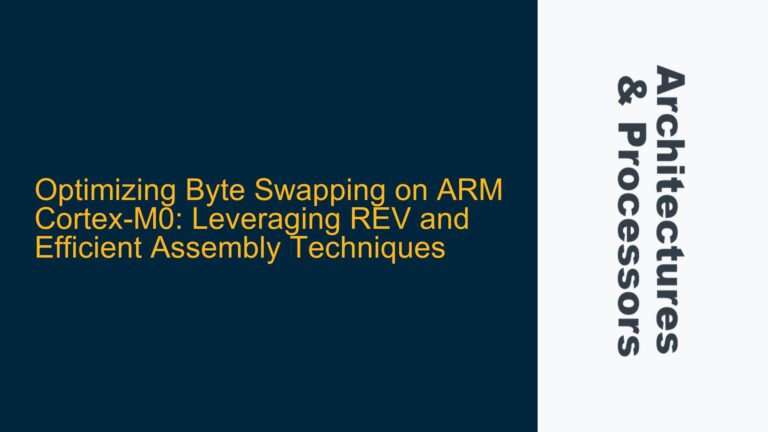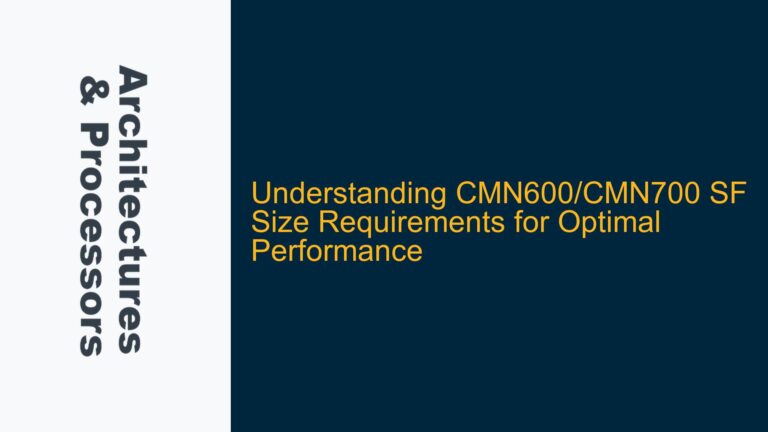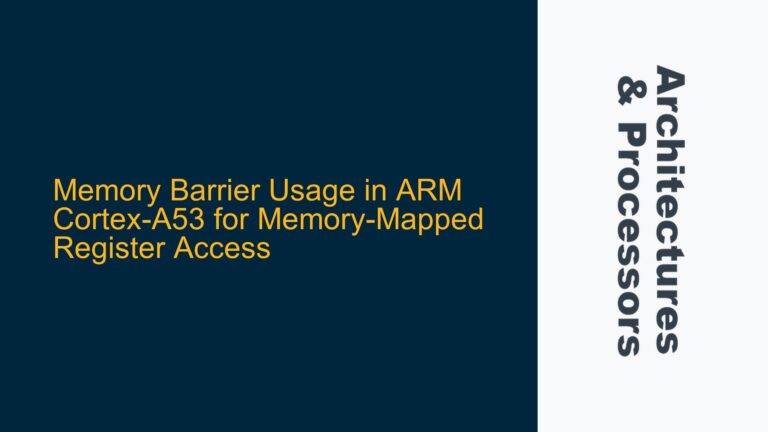ARM Cortex-A53 Cluster Constraints on NEON Configuration
The ARM Cortex-A53 processor, a widely used core in embedded systems, is designed with a shared architectural configuration within a cluster. This means that all cores within a single Cortex-A53 cluster must have identical configurations, including the presence or absence of the NEON SIMD (Single Instruction, Multiple Data) unit. NEON is an advanced SIMD extension that accelerates multimedia and signal processing tasks by enabling parallel processing of multiple data points within a single instruction cycle. However, enabling NEON across all cores in a cluster may not always be desirable, especially in cost-sensitive applications where only a subset of cores requires NEON capabilities.
The architectural constraint that mandates uniform NEON configuration across all cores in a cluster stems from the shared resources and design philosophy of the Cortex-A53. Each cluster shares a Level 2 (L2) cache, power management units, and other critical resources. This shared infrastructure simplifies the design and improves coherence but imposes limitations on configurability. For instance, if one core in a cluster has NEON enabled, all cores must have it enabled, as the shared L2 cache and memory interfaces are optimized for this uniformity. This design choice ensures predictable performance and simplifies the hardware-software interface but can lead to inefficiencies in scenarios where only a subset of cores requires NEON.
The implications of this constraint are significant for system designers aiming to optimize cost and power consumption. Enabling NEON on all cores increases die area and power consumption, even if only a subset of cores will utilize the SIMD capabilities. This is particularly problematic in applications such as IoT devices, where power efficiency and cost are critical. The inability to selectively enable NEON on a per-core basis within a cluster forces designers to either accept the overhead of enabling NEON on all cores or explore alternative architectures, such as splitting the design into multiple clusters.
Dual-Cluster vs. Single-Cluster Performance Trade-offs
When considering the performance implications of splitting a Cortex-A53 design into multiple clusters, several factors must be evaluated. A dual-cluster configuration, where each cluster contains two cores, allows for independent NEON configuration per cluster. This flexibility can be advantageous in scenarios where only a subset of cores requires NEON, as it enables the designer to disable NEON on one cluster entirely, reducing power consumption and die area. However, this approach introduces additional complexity and potential performance trade-offs.
In a single-cluster configuration with four cores, all cores share the same L2 cache and memory interfaces, which can lead to higher cache hit rates and lower latency for inter-core communication. This shared infrastructure is particularly beneficial for workloads that require frequent data sharing between cores, such as multi-threaded applications or real-time processing tasks. However, the inability to selectively enable NEON on a per-core basis means that all cores must bear the overhead of NEON, even if only a subset of cores will utilize it.
In contrast, a dual-cluster configuration with two cores per cluster allows for independent NEON configuration but introduces potential bottlenecks in inter-cluster communication. Data shared between clusters must traverse the system bus, which can introduce latency and reduce overall performance. Additionally, the L2 cache is no longer shared between all cores, which can lead to lower cache hit rates and increased memory bandwidth requirements. The performance impact of these trade-offs depends on the specific workload and the extent to which inter-core communication is required.
To quantify these trade-offs, designers can use tools such as Arm Cycle Models, which provide detailed simulations of different configurations. These models allow designers to assess the performance impact of various cluster configurations and NEON settings, enabling data-driven decisions. For example, a workload that requires heavy NEON usage on two cores but minimal usage on the remaining cores may benefit from a dual-cluster configuration, where NEON is enabled on one cluster and disabled on the other. Conversely, a workload that requires frequent data sharing between all cores may perform better in a single-cluster configuration, despite the overhead of enabling NEON on all cores.
Implementing Dual-Cluster Designs with Selective NEON Configuration
Implementing a dual-cluster Cortex-A53 design with selective NEON configuration requires careful consideration of both hardware and software aspects. From a hardware perspective, the design must accommodate the additional complexity of multiple clusters, including separate L2 caches, power management units, and system bus interfaces. This increased complexity can lead to higher design and verification costs, as well as potential challenges in achieving optimal performance and power efficiency.
From a software perspective, the operating system and application software must be aware of the cluster configuration and NEON settings. The Heterogeneous Multi-Processing (HMP) scheduler, commonly used in ARM-based systems, must be configured to allocate tasks appropriately based on the capabilities of each cluster. For example, tasks that require NEON should be scheduled on the cluster with NEON enabled, while tasks that do not require NEON can be scheduled on the cluster with NEON disabled. This requires modifications to the scheduler and potentially the application software to ensure optimal performance.
To implement a dual-cluster design, designers should follow a structured approach. First, the system requirements and workload characteristics should be analyzed to determine the optimal cluster configuration and NEON settings. This analysis should consider factors such as power consumption, die area, performance requirements, and inter-core communication patterns. Next, the hardware design should be developed, including the placement and configuration of each cluster, the design of the system bus, and the implementation of power management units. Finally, the software stack should be optimized to take advantage of the dual-cluster configuration, including modifications to the HMP scheduler and application software.
In conclusion, the ARM Cortex-A53’s architectural constraints on NEON configuration present both challenges and opportunities for system designers. While the requirement for uniform NEON configuration within a cluster can lead to inefficiencies, the flexibility of dual-cluster designs offers a viable solution for cost-sensitive applications. By carefully evaluating the performance trade-offs and implementing a structured design approach, designers can achieve optimal performance and power efficiency in multi-core Cortex-A53 systems. Tools such as Arm Cycle Models provide valuable insights into the performance impact of different configurations, enabling data-driven decisions and ultimately leading to more efficient and cost-effective designs.
